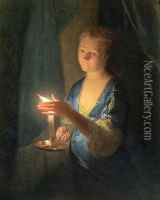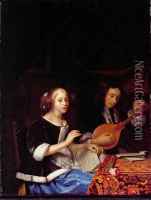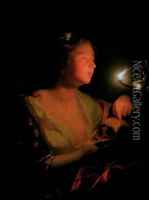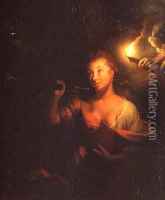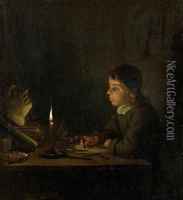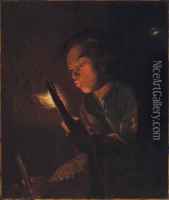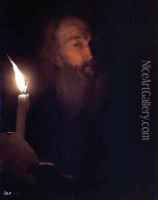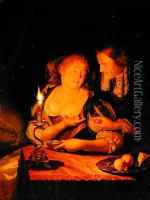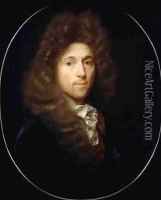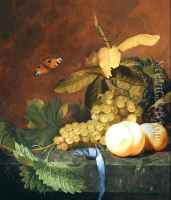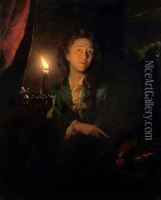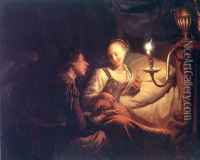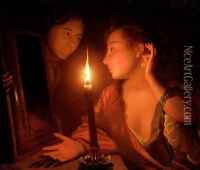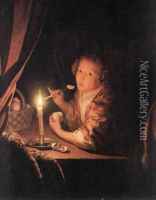Godfried Schalcken Paintings
Godfried Schalcken was a Dutch Golden Age painter and printmaker, known for his mastery in capturing the effects of light and shadow. Born in Made, near Dordrecht in the Netherlands, on November 1643, Schalcken studied under Samuel van Hoogstraten in Dordrecht before becoming a student and assistant of Gerard Dou in Leiden, one of Rembrandt’s most famous pupils. This tutelage under Dou significantly influenced Schalcken's technique and style, particularly in his use of light, which became a hallmark of his work.
Schalcken developed a distinctive style that combined a fine attention to detail with a unique handling of light, often using candles or lamps as his light sources. His paintings frequently depicted domestic scenes, portraits, and religious subjects, imbued with a sense of intimacy and warmth. He was particularly noted for his ability to depict night scenes with a remarkable sense of realism and atmosphere, a skill that set him apart from many of his contemporaries.
In the 1690s, Schalcken traveled to England, where he gained the patronage of King William III and Queen Mary II, painting portraits and possibly influencing English artists with his technique. His work was well received, and he stayed in England for several years before returning to the Netherlands. Later, he also spent time in The Hague, where he continued to work until his death in October 1706.
Throughout his career, Schalcken's work was praised for its meticulous detail and the subtle play of light and shadow. His paintings are characterized by their technical skill and the emotional depth they convey, often focusing on the quiet moments of daily life. Today, his works are held in high esteem and can be found in major museums around the world, serving as enduring examples of the Dutch Golden Age's fascination with light and the intimate portrayal of domestic life.
